
On 26 Jan 1932, William Wrigley, Jr., died, the American salesman and manufacturer who made his Wrigley’s chewing gum company the world’s largest producer and distributor of this product. Today's book pick is: The Great American Chewing Gum Book, by Robert Hendrickson. This is fun book to read because there is so much more history of chewing gum than you previously knew … from the jungle rubber tree to your bedpost overnight! The Mayas manufactured it. Apaches, Commanches and Kennebecs chomped on it. Emily Post refused to mention it. Astronauts in outer space chewed on it. Read how it is made, about the brands that came and went, successes and failures, and of course Wrigley, “The Man Who Taught the World to Chew,” and a photograph of his astonishing “Palace that Gum Built” in Chicago.
It is available from Amazon, typically about New from $57.50. Used from $4.48. (As of earlier time of writing - subject to change.)
 | Palaeontology is the Aladdin’s lamp of the most deserted and lifeless regions of the earth; it touches the rocks and there spring forth in orderly succession the monarchs of the past and the ancient river streams and savannahs wherein they flourished. The rocks usually hide their story in the most difficult and inaccessible places. |
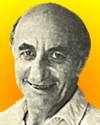 | A science is any discipline in which the fool of this generation can go beyond the point reached by the genius of the last generation. |
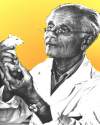 | The fairest thing we can experience is the mysterious. It is the fundamental emotion which stands at the cradle of true science. He who knows it not, and can no longer wonder, no longer feel amazement, is as good as dead. We all had this priceless talent when we were young. But as time goes by, many of us lose it. The true scientist never loses the faculty of amazement. It is the essence of his being. |
| Before you look at today's web page, see if you can answer some of these questions about the events that happened on this day. Some of the names are very familiar. Others will likely stump you. Tickle your curiosity with these questions, then check your answers on today's web page. | |
| Births | |
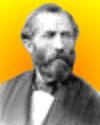 | On 26 Jan, Heinrich Anton de Bary, was born, a German botanist, a founder of modern mycology and plant pathology remembered for his research into the roles of fungi and other agents in causing plant diseases. He determined the life cycles of many fungi. He coined the term (1879) still used to mean a mutually beneficial partnership between two organisms. What is this term? |
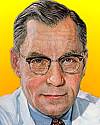 | On 26 Jan 1904, Ancel Keys, was born, an American nutritionist and epidemiologist who was first to identify the role of saturated fats in causing heart disease. In 1935, he studied the physiological effects of altitude. At the onset of WW II, he designed the lightweight yet nutritious K ration used by American paratroops. The hard biscuits, dry sausage, hard candy and chocolate it contained were items he originally selected at a Minneapolis grocery store. Why were the K rations so-called? |
| Deaths | |
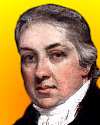 | Edward Jenner was an English surgeon (1749-1823) who discovered the method of vaccination for a dreaded disease. What was the disease he treated? |
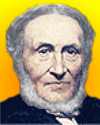 | Alexander Macmillan (1818-1896) was a Scottish publisher whose name is still well-known a giant in the book industry. Though not himself a professional scientist, Macmillan did much to promote science in the Victorian times. Prompted by Norman Lockyer, its first editor, Macmillan published a science journal. It remains strong in the present day, although to keep it alive, Macmillan initially tolerated losses for three decades, because of his committment to the journal's mission. Which science journal did Macmillan publish? |
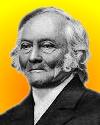 | A German physicist (1804-1891), working with his friend Carl Friedrich Gauss, investigated terrestrial magnetism and in 1833 devised an electromagnetic telegraph. A magnetic unit, is named after him. Can you name this physicist? |
| Events | |
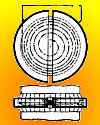 | On 26 Jan of a certain year, the US Patent Office received a patent application for the cyclotron by Ernest Orlando Lawrence. Within the same decade, this atom-smashing instrument won the Nobel Prize for its inventor. In which decade was this patent application made? |
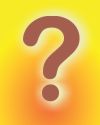 | On 26 Jan 1697, a famous scientist received Jean Bernoulli’s brachistochrone mathematics problem. The scientist solved it before going to bed that same night, thus inventing the calculus of variations. When Bernoulli saw the “anonymous” solution he recognized the brilliant originality of the work and commented, “We recognize the lion by his claw.” Who was the famous scientist with the “lion's claw”? |
Fast answers for the previous newsletter for January 25: numerical value of pi • Robert Boyle • seismology for analysis of earthquake waves • shigellosis • boring of a cannon.
 If you enjoy this newsletter, the website, or wish to offer encouragement or ideas, please send feedback by using your mail reader Reply button.
If you enjoy this newsletter, the website, or wish to offer encouragement or ideas, please send feedback by using your mail reader Reply button. Your click on a Facebook, StumbleUpon, or other social button on the site webpages is also a welcome sign of appreciation. Thank you for using them.
© This newsletter is copyright 2020 by todayinsci.com. Please respect the Webmaster's wishes and do not put copies online of the Newsletter — or any Today in Science History webpage. (If you already have done so, please remove them. Thank you.) Offline use in education is encouraged such as a printout on a bulletin board, or projected for classroom viewing. Online, descriptive links to our pages are welcomed, as these will provide a reader with the most recent revisions, additions and/or corrections of a webpage. For any other copyright questions, please contact the Webmaster by using your mail reader Reply button.
--
If you do not want to receive any more newsletters, Unsubscribe
To update your preferences and to unsubscribe visit this link
Executive Real Estate Business Class
-
"It was like a man with wings. It wasn't like anything you'd see on TV or in a monster movie." ...
About the publisher
Search This Blog
Blog Archive
-
▼
2021
(585)
-
▼
January
(109)
- Ian Kershaw on why Hitler declared war on America
- On This Day for January 31 - Guy Fawkes executed i...
- Newsletter for Sunday 31 January.
- January 31: Slavery Abolished in the USA, Guy Fawk...
- On This Day for January 30 - “Great Soul” assassin...
- Newsletter for Saturday 30 January.
- January 30: Oliver Cromwell Ritually Executed, Mah...
- On This Day for January 29 - Iraq, Iran, and North...
- Newsletter for Friday 29 January.
- January 29: Romeo and Juliet, Coca-Cola and the Se...
- 'The Food That Built America' Is Back!
- On This Day for January 28 - Explosion of the spac...
- Newsletter for Thursday 28 January.
- Inside The Still-Mysterious Circumstances Of Heath...
- Demystified: What’s the Difference Between a Presi...
- On This Day for January 27 - Vietnam War ended, Wo...
- Newsletter for Wednesday 27 January.
- January 27: Kaiser Bill is Born, the Siege of Leni...
- You are now unsubscribed
- What The Wild West Actually Looked Like in 48 Reve...
- New Savings! $50 off Family Memberships
- On This Day for January 26 - First European settle...
- Newsletter for Tuesday 26 January.
- January 26: Catholic Counter-Reformation, British ...
- On This Day for January 25 - Claudius affirmed as ...
- Newsletter for Monday 25 January.
- January 25: São Paulo Founded, Charles Wilkes Disc...
- Queen Victoria and Prince Albert's marriage | Wors...
- On This Day for January 24 - Opportunity's Mars la...
- Newsletter for Sunday 24 January.
- January 24: Scouting for Boys, Apple's Macintosh a...
- On This Day for January 23 - Madeleine Albright sw...
- See All That's Interesting Most Popular Articles
- Please Confirm Subscription To Our Newsletter
- The "Alaskan Avenger" Who Attacked Sex Offenders W...
- On This Day for January 22 - Roe v. Wade ruling, L...
- Newsletter for Friday 22 January.
- On This Day for January 21 - First commercial Conc...
- Newsletter for Thursday 21 January.
- Need Context with Your News?
- Demystified: Where Do Honeybees Go in the Winter?
- On This Day for January 20 - Barack Obama sworn in...
- Newsletter for Wednesday 20 January.
- On This Day for January 19 - Rule in India transfe...
- Newsletter for Tuesday 19 January.
- On This Day for January 18 - German Empire establi...
- Newsletter for Monday 18 January.
- January 18: King of Siam Kills the Crown Prince of...
- Queen Victoria and Prince Albert: was their union ...
- On This Day for January 17 - Hawaiian monarchy ove...
- Newsletter for Sunday 17 January.
- January 17: US-Modoc War, the UN Security Council ...
- On This Day for January 16 - Beginning of Persian ...
- Newsletter for Saturday 16 January.
- January 16: Ivan the Terrible, Louis XVI's Death S...
- The Tragedy Of David Reimer, The Boy Forced To Liv...
- On This Day for January 15 - British Museum opened...
- Newsletter for Friday 15 January.
- January 15: Henry VIII and the Church of England, ...
- On This Day for January 14 - Premiere of Giacomo P...
- Newsletter for Thursday 14 January.
- January 14: The Dutch Conquer Malacca, the US Revo...
- Demystified: Why Does Water Freeze from the Top Down?
- On This Day for January 13 - Émile Zola's “J'accus...
- Newsletter for Wednesday 13 January.
- January 13: 1st Issue of "The Times" of London, Ch...
- On This Day for January 12 - Haiti severely damage...
- Newsletter for Tuesday 12 January.
- January 12: A Day of Coronation, Gandhi's Last Fas...
- On This Day for January 11 - Amelia Earhart's Hawa...
- Newsletter for Monday 11 January.
- January 11: Spices, Morse Code, Insulin and 55 Yea...
- The real history behind Bridgerton
- On This Day for January 10 - Common Sense publishe...
- Newsletter for Sunday 10 January.
- January 10: Thomas Paine Publishes Common Sense, T...
- On This Day for January 9 - Election of Mahmoud Ab...
- THE IGBO LANDING - HOW THEY COMMITTED SUICIDE
- Newsletter for Saturday 9 January.
- January 9: Joan of Arc's Trial, the Daguerreotype ...
- The Biggest Historical Discoveries From 2020 And M...
- On This Day for January 8 - Anniversary of Grimald...
- Newsletter for Friday 8 January.
- January 8: US National Debt Briefly Hits $0, Forma...
- On This Day for January 7 - Galileo's discovery of...
- Newsletter for Thursday 7 January.
- January 7: A Day of Invention - The Typewriter, Hy...
- On This Day for January 6 - Epiphany, Richard II i...
- Newsletter for Wednesday 6 January.
- January 6: Charles I put on Trial for Treason, FDR...
- Meet The Real-Life Goodfellas Whose True Stories W...
- On This Day for January 5 - Golden Gate Bridge con...
- Newsletter for Tuesday 5 January.
- January 5: Richmond Burns, The Nazi Party Forms, A...
- Last Call for 30% off Memberships
- On This Day for January 4 - Burma granted independ...
- Newsletter for Monday 4 January.
- January 4: The Colt Revolver, a 33 Year Strike and...
- Dangers of Victorian London| Roman history quiz | ...
- On This Day for January 3 - Martin Luther excommun...
-
▼
January
(109)
-
Blogroll
-
About
HistoryFact










0 comments:
Post a Comment